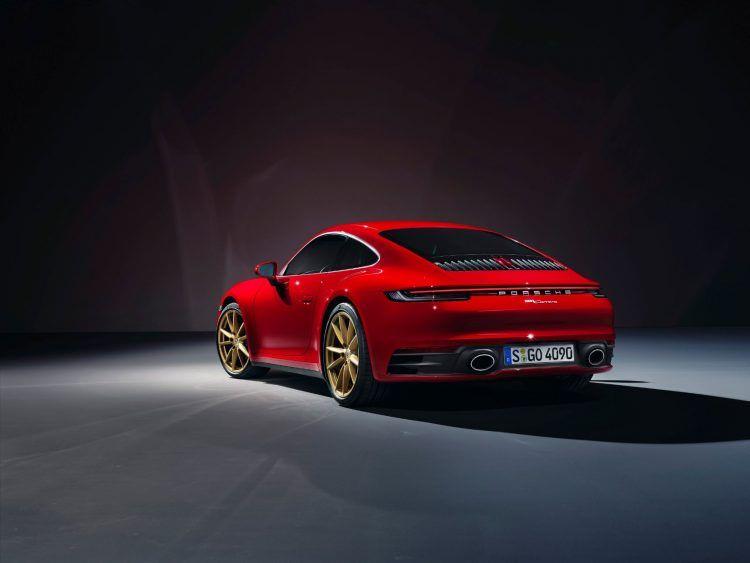
- Новые 911 Carrera и Carrera Cabriolet расширяют модельный ряд 911.
- Турбины для конкретной модели помогают шестицилиндровому двигателю развить мощность до 380 лошадиных сил..
- Этой осенью ожидайте новые 911 с полноприводными вариантами, которые появятся позже.
После представления последних версий вечнозеленых 911, Carrera S и 4S, Porsche снова расширяет модельный ряд 911 Carrera и Carrera Cabriolet. И это будут не просто пушистые автомобили с бейджами, нет. В 2020 году Carreras будут выпускать турбореактивные двигатели для одной модели. Яс, яс. Единственное слово, которое должно вселить страх в сердца ваших соперников (и вас, если вы когда-либо выходили за рамки оригинального 911/930 Turbo). В любом случае, Porsche возвращается к очередному кусочку производительности Apple в 2020 году.
Очевидно, это очень хорошая новость, но то, что отличает модели Carrera от S и 4S?
2020 Porsche 911 Carrera: Двигатель и Трансмиссия
Для начала, как и в 911 S и 4S 2020 года, новые Carrera и Cabriolet приводятся в действие 3,0-литровым плоским шестицилиндровым двигателем с двумя турбинами. Для Carrera, турбокомпрессоры для конкретной модели выдают очень здоровую 379 лошадиных сил и 331 фунт-фут. крутящего момента. Это равняется удару в девять лошадиных сил от предыдущего 911 Carrera. Стандартная коробка передач — это восьмискоростной PDK, который позволяет 2020 911 Carrera пробить 60 за четыре секунды. Если вы выберете дополнительный пакет Sport Chrono, это время снизится до 3,8 секунды. Либо время работает над улучшением по сравнению с предыдущим 911 Carrera Coupe с коробкой передач PDK.
Кабриолет предлагает аналогичные номера производительности. 60 миль в час разгоняются за 4,2 секунды или четыре секунды, если вы используете опциональный пакет Sport Chrono. 911 Carrera с жесткой крышей разгоняется до 182 миль в час, а 911 Carrera Cabriolet может разогнаться до 180. Porsche изо всех сил заявляет, что это «максимальная скорость»..
 2020 Porsche 911 Carrera. Фото: Porsche Cars North America, Inc.
2020 Porsche 911 Carrera. Фото: Porsche Cars North America, Inc.
Подвеска, Шины и Торможение
И 911 Carrera, и Carrera Cabriolet поставляются с системой активного подвеса Porsche или PASM. Как и в Carrera S и 4S, эта система демпфирования с электронной регулировкой входит в стандартную комплектацию и предлагает два выбираемых режима: обычный и спортивный. Колеса имеют ступенчатый диаметр: 19 дюймов спереди и 20 дюймов сзади. Они обтянуты шинами 235/40 ZR 19 и 295/35 ZR 20 соответственно. Существует дополнительная ступенчатая установка 20/21 дюйма, вытащенная из Carrera S и 4S.
Связано: лучше проконсультироваться с врачом перед поездкой на Porsche 911 Speedster.
Тормоза, всегда сильные стороны Porsche, оснащены серыми чугунными роторами с внутренней вентиляцией и поперечным бурением. Это 13 дюймов, как спереди, так и сзади, и оснащены черными четырехпоршневыми суппортами. Если вы хотите остановиться еще быстрее, предлагаются керамические композитные тормоза Porsche. Как и на моделях S, Wet Mode является стандартным оборудованием. Влажный режим автоматически обнаруживает воду и соответствует системе контроля устойчивости и антиблокировочной тормозной системы. Это даже предупреждает водителя.
 2020 Porsche 911 Carrera Кабриолет. Фото: Porsche Cars North America, Inc.
2020 Porsche 911 Carrera Кабриолет. Фото: Porsche Cars North America, Inc.
2020 Porsche 911 Carrera: внешние и внутренние обработки
Снаружи модели 911 Carrera отличаются арками крыльев и крышкой переднего багажного отделения, напоминающими классические 911. Также есть новая, полноразмерная светодиодная полоса, простирающаяся через заднюю часть. Привыкните к этому, на какое-то время это будет подпись Porsche. Единственная разница между стандартным 911 Carreras и производными S / 4S — это выпускные отверстия. Стандартные модели 911 Carrera имеют большую прямоугольную, однотрубную выхлопную трубу с каждой стороны; в то время как модели S получают набор круглых двойных выхлопных труб на каждой стороне. Опциональная система Sport Exhaust доступна.